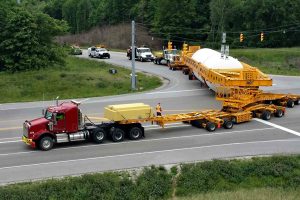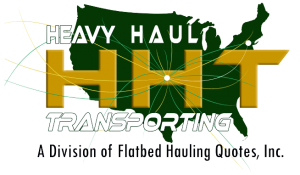Choosing the Right Trailer for Heavy Equipment Transport

Heavy Equipment Transport, Heavy Equipment Transport Companies, Heavy Haul Equipment Movers, Flatbed Transportation Services
Choosing the right trailer for the transportation of heavy machinery is essential for ensuring the safe and effective delivery of your equipment. The process of moving heavy equipment requires careful planning, and collaborating with experienced heavy haul equipment movers guarantees that your machinery will arrive at its destination without damage. What steps should you take to identify the most suitable trailer for your requirements? Let’s examine the available options.
- Understand the Types of Equipment You Need to Transport
The initial step in selecting the right trailer is to comprehend the kind of equipment you will be transporting. Heavy equipment ranges from bulldozers and excavators to cranes and large vehicles. Each of these requires a specific type of trailer, based on weight, size, and the type of load it will carry.
– Small to Medium Equipment: For lighter equipment, like smaller construction vehicles, a flatbed trailer may suffice. Flatbed transportation services are ideal for machinery that does not require additional protection or special loading mechanisms.
– Larger, Heavier Equipment: For larger items, such as cranes or large tractors, you will likely need a lowboy or step deck trailer. These trailers offer low clearance and are designed for hauling oversized and heavy equipment.
- Know the Weight and Dimensions
Heavy equipment transport companies often use weight and size as the primary factors when selecting the right trailer. Overloading or exceeding weight limits can result in fines, damage to equipment, and delayed delivery.
It’s important to know:
– Gross Vehicle Weight (GVW): This includes the weight of the equipment and the trailer. Ensure the trailer’s weight capacity aligns with the equipment’s weight.
– Length and Width: Trailers come in various sizes to accommodate different dimensions. Measure your equipment carefully to ensure the trailer can handle its size.
Heavy haul equipment movers are experts at determining these dimensions and ensuring your equipment is loaded securely without exceeding trailer limits. Always ask for advice when in doubt.
- Types of Trailers for Heavy Equipment Transport
Different trailers are designed for different kinds of loads. The most commonly used options by heavy haul equipment movers are as follows.
– Flatbed Trailers: Flatbed transportation services are often used for standard machinery that can be loaded easily and doesn’t need to be enclosed. These trailers are versatile, but you’ll need to use straps or tarps to secure the equipment properly.
– Lowboy Trailers: These are ideal for very heavy and oversized machinery. The lower deck height ensures that tall equipment like cranes or backhoes can be transported safely and without excessive height restrictions.
– Step Deck Trailers: These trailers are perfect for equipment that’s too tall to fit on a flatbed but doesn’t require a lowboy. The drop deck design allows for loading higher equipment while maintaining road safety regulations.
- Consider Loading and Unloading Ease
When transporting heavy equipment, how easy it is to load and unload can significantly impact the choice of trailer. Some trailers, like lowboys, allow for easy loading with a ramp, making them perfect for large and heavy machinery. Other trailers may require cranes or forklifts for loading, which may add to the overall cost and time of transport.
Heavy equipment transport companies are equipped to handle these logistics, and many offer additional services like cranes or winches for loading and unloading, streamlining the process.
- Safety Features and Regulations
Heavy equipment transport requires strict adherence to safety standards, and choosing a trailer with the necessary safety features is crucial. Flatbed trailers must be equipped with proper tie-down equipment, while lowboy trailers may require additional securing mechanisms for heavy machinery.
Regulatory Compliance: Be sure to work with companies that are knowledgeable about local and federal transport laws. Certain states have different weight restrictions or road rules for oversized loads, and professional heavy haul equipment movers are familiar with these rules.
- Partner with Experienced Heavy Haul Equipment Movers
Partnering with reputable heavy equipment transport companies is the next critical step. These companies have the expertise to determine the best trailer for your load and can offer guidance on the safest and most cost-effective route. They’ll also help with the logistics and paperwork involved in transporting oversized loads across state lines.
Choosing the right trailer for heavy equipment transport is a combination of understanding your equipment, knowing the trailer types, and working with experienced professionals. Whether you’re transporting construction machinery or large vehicles, trust Heavy Haul Transporting to help you select the best solution for your needs. By collaborating with the right heavy equipment transport companies, you can ensure a smooth, safe, and efficient transport experience across the United States. Ready to transport your heavy equipment? Contact Heavy Haul Transporting today to get expert advice and reliable service tailored to your needs!

